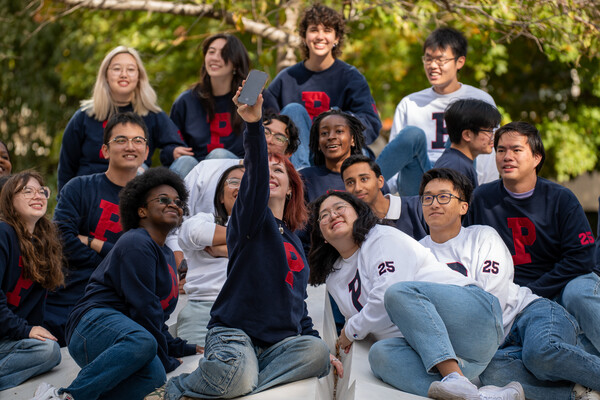Maeda on art, design and getting 'unstuck'
When John Maeda is feeling run down, he plays with a toy train.
The train has its own track, and when turned loose, turns endless figure eights, back and forth, round and round.
But not without difficulty. At each bend in the figure-eight pattern, the train invariably gets stuck. Wheels spinning, it goes nowhere, struggling forward. Then, every time, it finds a way to break free.
“I look at that train when I get depressed,” says Maeda, a renowned digital artist and designer and Allen Professor of Media Arts & Sciences at MIT. “That train is me. I get stuck sometimes, but I always find a way to get unstuck.”
He’s done so, in fact, ever since his days as an undergraduate at MIT. Due to the influence of an “evil professor,” a young Maeda became disenchanted with the world of computers and, partly to try something new and partly to follow his girlfriend (they later married, and now have four children), dropped out of college and enrolled in a Japanese art school. It was a risk, especially considering his father’s wishes. “My father believed there were only two schools in the world,” Maeda explains. “It was MIT or Harvard.”
But the blend of MIT computer smarts and the cultural awakening of art school has served him well: His work seamlessly blends high technology and art, creating works that are alternately funny, challenging and beautiful. Esquire magazine has tabbed him “one of the 21 most important people for the 21st Century.”
The celebrated designer spoke about his work on Nov. 30 at College Hall as part of the 2005 Penn Humanities Forum on Word and Image. “Art,” Maeda told the packed audience, “is the science of enjoying life.”
Clearly, Maeda has fun with his work. Though he’s won the highest design honors than can be achieved in the United States (the National Design Award) and Japan (the Mainichi Design Prize) and done commercial work for such companies as Sony and Shiseido, much of Maeda’s time these days is apparently spent creating computer programs with no purpose other than entertainment.
Among his recent creations is the so-called “Broccoli Typewriter,” a keypad of broccoli stalks that, when struck, sends stalks flying across the screen. With another program, voice-recognition software allows Maeda to yell into his computer, sending an apparently endless cascade of Campbell’s Soup cans to spin in cyberspace—the louder he yells, the faster the cans twirl.
When not working on his outlandish designs—a recent series of artwork used french fries and Cheetos as the medium —Maeda is busy inspiring the next generation of radical digital designers. At MIT, he serves as director of the aesthetics + computation group—dedicated to “the design of “(as yet) unimaginable forms and spaces”—and recently launched the SIMPLICITY project. With that initiative, Maeda hopes to create designs that are “simpler to understand, easier to use, and ultimately, more enjoyable.”
He’s also continuing his education: This spring, Meada expects to earn his MBA from MIT. The reason for enrolling in the first place, it turns out, is vintage Maeda. “I believe MBAs are destroying the world,” he joked. “I have to understand their language.”
For more on the Penn Humanities Forum on Word and Image, go to humanities.sas.upenn.edu.







